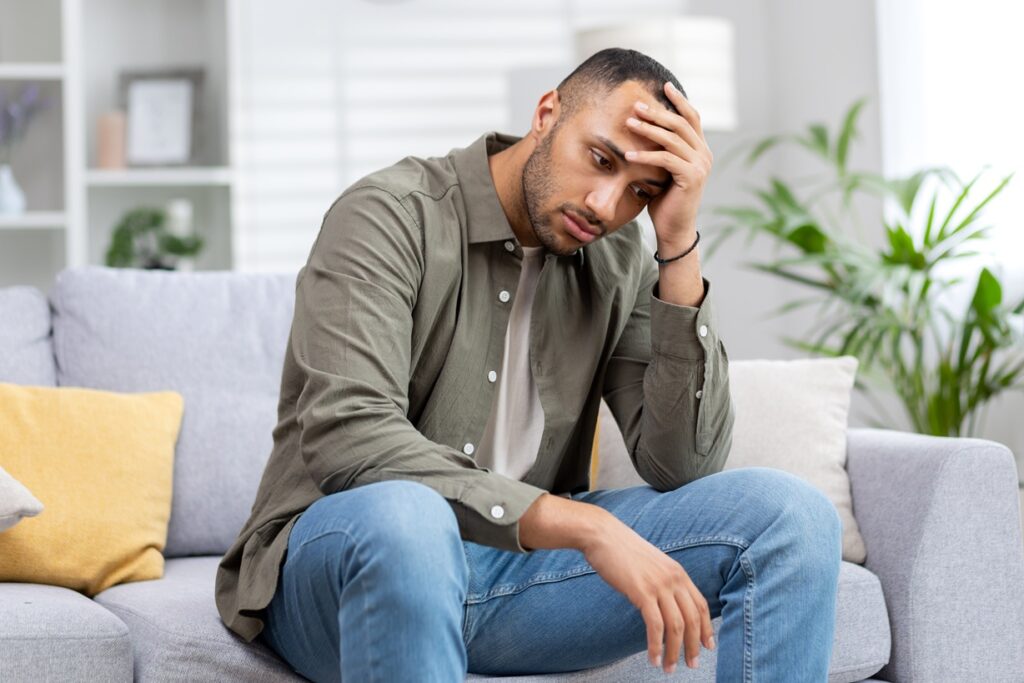More than a third of men in the U.S. aged 45 and older have a testosterone deficiency, according to a Harvard Health Publishing article. To appreciate why this is so concerning, it helps to know more about this hormone and its role in the male body.
Testosterone is the primary androgen in men. And it plays a crucial role in numerous male bodily functions, with some of the more notable ones being bone and muscle growth, red blood cell production, sex drive, sperm production, and overall well-being. When the testes and the adrenal glands don’t secrete enough testosterone into the bloodstream, it can interfere with many of these various functions and trigger the onset of numerous unpleasant symptoms.
What Is Considered a Healthy and Normal Testosterone Range in Men?
Most endocrinologists agree that 300 to 1,000 nanograms per deciliter (ng/dL) or 10 to 35 nanomoles per liter (nmol/L) constitutes normal and healthy testosterone levels for men. Aging is one of the primary causes of low testosterone in men, and that’s because the testes and the adrenal glands naturally secrete and release less testosterone into the bloodstream as men get older. Several medical conditions can also put men at risk of struggling with male hypogonadism or testosterone deficiency, some of which include type 2 diabetes, heart disease, chronic obstructive pulmonary disease (COPD), certain cancers, and autoimmune disorders. Excessive alcohol consumption and taking certain medications, such as opioids, can also elevate the risk of developing low testosterone levels.
According to one study published by the Mayo Clinic, most men experience a 1% decline in testosterone each year after age 40. As a result, most men struggle with a noticeable testosterone deficiency in middle age and an even more significant deficiency in late adulthood if they don’t seek treatment. Some of the symptoms synonymous with testosterone deficiency in men include the following:
- Anxiety and depression
- Azoospermia or low sperm count
- Difficulty focusing or concentrating
- Elevated cortisol and blood pressure levels
- Erectile dysfunction (ED)
- Fatigue
- Gynecomastia
- Infertility
- Insomnia
- Irritability
- Low libido
- Osteoporosis
- Reduced muscle mass and strength
- Testicular atrophy
- Thinning pubic and armpit hair
- Weight gain
How Healthy Lifestyle Habits Can Help Boost Low Testosterone in Men
For many men, healthy living is enough to ramp up testosterone production and provide relief from deficiency-related symptoms. Examples of healthy living include exercising regularly, getting plenty of deep, restorative sleep each night, and consuming a nutrient-dense, well-rounded diet. Studies show that these healthy lifestyle habits can help boost male testosterone production by as much as 30% in some men. Limiting alcohol consumption and quitting smoking can also help, according to many of the same studies.
How Testosterone Replacement Therapy (TRT) Supports an Active Lifestyle
Testosterone replacement therapy is a medicinal treatment that involves the use of FDA-approved prescription drugs to stimulate the testes and the adrenal, hypothalamus, and pituitary glands to secrete and release more testosterone into the blood. Medications commonly prescribed as part of a TRT regimen include Testopel, Testim, Fortesta, Depo-Testosterone, Aveed, and Androgel. Testoderm and Androderm are also quite popular. For some men, TRT can be a godsend if healthy lifestyle habits alone are not enough to get their testosterone levels where they need to be. It also supports an active lifestyle.
A plurality of studies show that combining healthy lifestyle habits and TRT provides a faster uptick in testosterone production and relief from low testosterone symptoms than healthy lifestyle habits or TRT alone. For example, combining a well-balanced diet, regular exercise, and TRT can accelerate muscle growth and strength gains more effectively than pursuing each separately.
TRT and healthy lifestyle habits can also improve bone density, lower the risk of bone-related diseases, like osteopenia and osteoporosis, and promote skeletal health in men with low testosterone faster when combined. The same holds for boosting energy levels and vitality. All of these go a long way toward supporting an active lifestyle.
How Much Does Testosterone Replacement Therapy Cost?
Several factors dictate how much someone can expect to pay for testosterone replacement therapy. Some of these include the specific testosterone medication they are taking, the mode and frequency of administration, and whether or not they have insurance. Bearing that all in mind, the average annual cost of testosterone replacement therapy is between $1,650 and $3,200. To learn more about TRT, the associated cost of treatment, and which testosterone-boosting medication is best for you, consider speaking with a licensed endocrinologist today.






